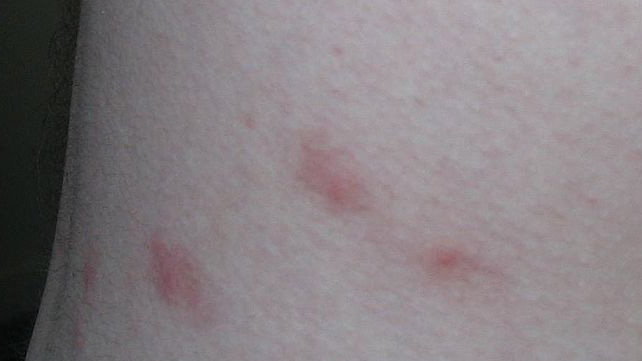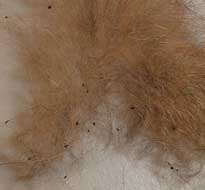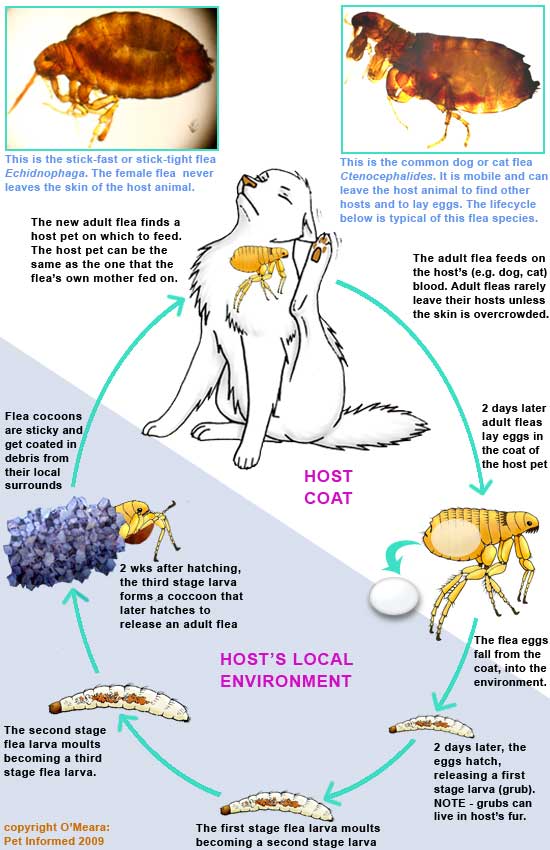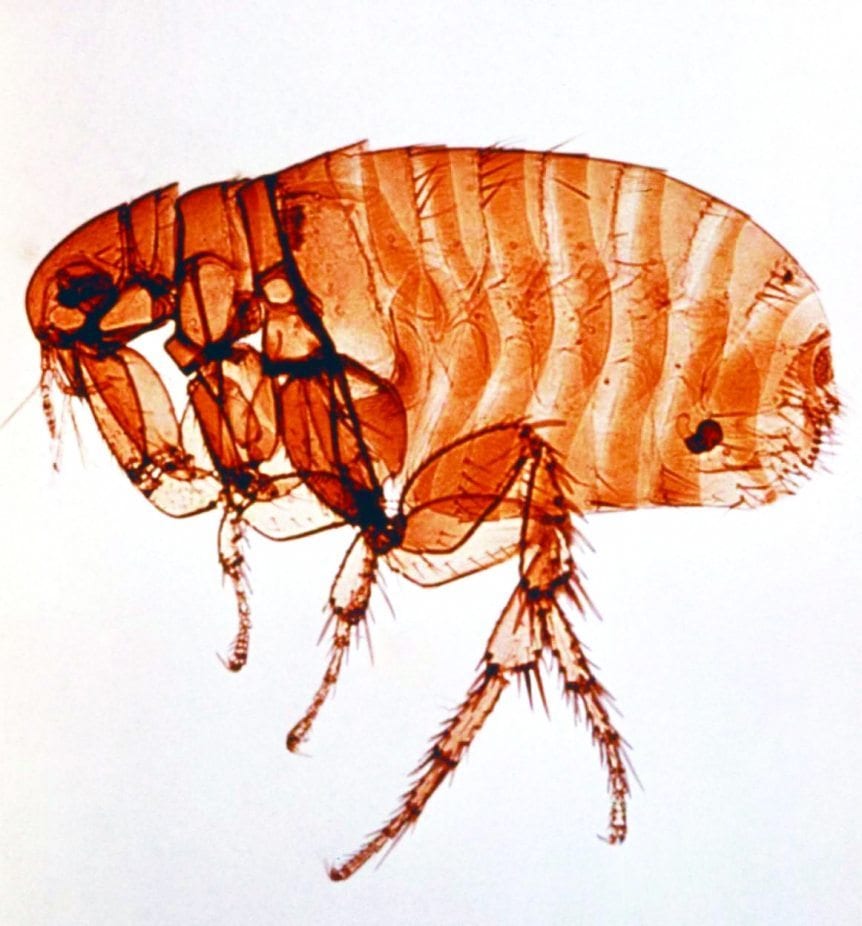By. Dr. Liza Curman
Fleas. We all hate them, right? We see a dog or cat scratching and immediately think fleas. They bite people too, so you to end up with red flea bites, usually 3 together “breakfast, lunch & dinner”. 
But did you know that more than likely means you have an infestation in your home? That can take up to 3 to 4 weeks to clear up? With fleas, prevention is definitely better than cure!
Fleas are ectoparasites that feed on the blood of mammals or birds. They are specialised in one host species, but in a strong infestation, they can reproduce on other species. So, if you have a dog and a cat, they have two different types of fleas, but they can cross over and we commonly see cat fleas on dogs. They have strong legs for jumping, strong claws for piercing through skin and a flat body for easier movement in-between hair.
 Flea Dirt on a cat’s coat
Flea Dirt on a cat’s coat
Fleas have 4 life stages – egg, larva, pupa and imago (adult). It is important to know that flea populations consist of 50% eggs and only 5% adults. Meaning that what you see on your animal is only 5% of the infestation. They lay eggs on their host and in their environment (Yes, that means your house, kennels & yards) and it can take from 2 days to 2 weeks for the eggs to develop into larvae. Larva feed on any organic material and do their best to avoid sunlight, keeping to humid, dark places (in carpets, backs of couches, behind curtains, in the crevices of wooden floors, etc). After three larval stages, they weave silken cocoons and metamorphose from the pupa to the adult form. To reach the full reproductive adult form or imago, pupae need to find hosts and feed on blood. The adults have deposited blood in their faeces on your pet’s coat, bedding etc. Adult fleas lives for 2 or 3 months, but females can lay more than 5,000 eggs in that period.

With the rise of flea infestation in pets, several conditions may occur. Fleas are now surviving the winter months in our homes, garages and sheds. Central heating and modern insulation have allowed them to survive.
So what do we see in our pets? Symptoms can range from mild itching or scratching, to hotspots to the development of dermatitis and flea allergy dermatitis. Your pet becomes very itchy and their skin gets very red and inflamed. As a result of scratching and biting, hair loss can occur. Secondary infections with bacteria & yeast may also occur. If the infestation is severe, it can even lead to anaemia. The body just can’t produce enough blood, because fleas are taking it. 
Secondly, fleas as other ectoparasites, can transmit diseases. They are vectors for viral, bacterial and rickettsial diseases for both animals and humans. Some of the best known diseases that fleas transmit are plague and tapeworms (which can have serious consequences for children in particular). Therefore, treating your pet for worms is a very important part of any thorough flea treatment protocol.
So, how do we get rid of them?
Each case is individual in terms of your pet’s reaction to the presence of fleas, and also your dog’s or cat’s lifestyle, which will often inform our decision as to what product is best for you and your pet. Just ask us at Clare Street Vets or Shannon Vets which flea treatment & preventative is best for you.
In Clare Street Vets and Shannon Vets we have a large range of flea protection products. You can choose between products that last for 30 days or 90 days. The range of products for flea treatment includes spot-ons, sprays, or tablets, as they have the best protection rate.
Some flea treatments only treat adult fleas as they bite our pets; they do not treat the larvae or pupae that will grow into adults in a matter of weeks, meaning your pet will continue to be infested. These are the most likely products you will find in shops and supermarkets.
Your vet can offer products that take care of fleas in all life stages. Products that remain in the skin cells, so that the larvae and pupae are eliminated as they mature into adulthood. Ask our vets which product offers the best protection for your pet. By protecting your pet from fleas, you protect yourself and your family too.

